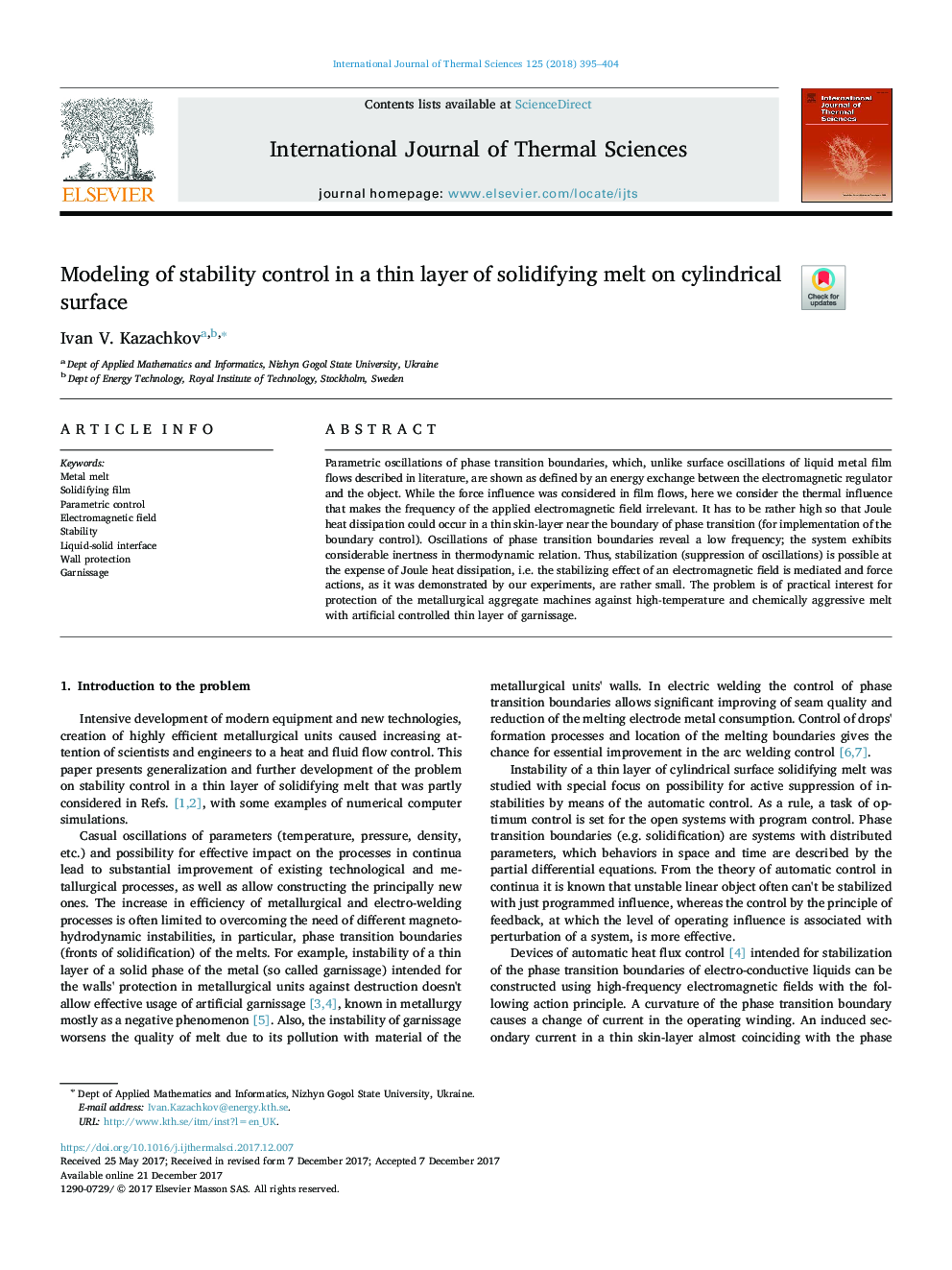| Article ID | Journal | Published Year | Pages | File Type |
|---|---|---|---|---|
| 7060854 | International Journal of Thermal Sciences | 2018 | 10 Pages |
Abstract
Parametric oscillations of phase transition boundaries, which, unlike surface oscillations of liquid metal film flows described in literature, are shown as defined by an energy exchange between the electromagnetic regulator and the object. While the force influence was considered in film flows, here we consider the thermal influence that makes the frequency of the applied electromagnetic field irrelevant. It has to be rather high so that Joule heat dissipation could occur in a thin skin-layer near the boundary of phase transition (for implementation of the boundary control). Oscillations of phase transition boundaries reveal a low frequency; the system exhibits considerable inertness in thermodynamic relation. Thus, stabilization (suppression of oscillations) is possible at the expense of Joule heat dissipation, i.e. the stabilizing effect of an electromagnetic field is mediated and force actions, as it was demonstrated by our experiments, are rather small. The problem is of practical interest for protection of the metallurgical aggregate machines against high-temperature and chemically aggressive melt with artificial controlled thin layer of garnissage.
Related Topics
Physical Sciences and Engineering
Chemical Engineering
Fluid Flow and Transfer Processes
Authors
Ivan V. Kazachkov,
